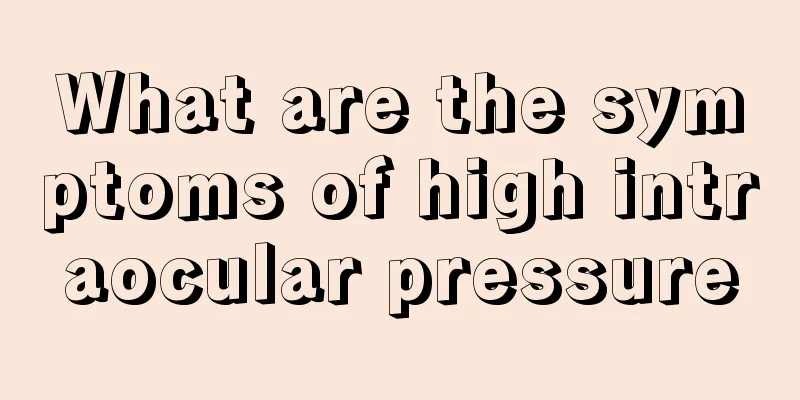What are the symptoms of high intraocular pressure

|
Many people don’t know what the symptoms of high intraocular pressure are. The intraocular pressure of a normal person is stable, maintained in the range of 11-21mmhg to keep the normal shape of the eyeball. When suffering from diseases such as glaucoma, symptoms of high intraocular pressure will appear, mainly manifested as swelling and discomfort of the eyeball, and severe pain in the eye socket. This disease mostly occurs in middle-aged people over 40 years old. Let’s take a closer look at the symptoms of high intraocular pressure. Intraocular pressure is one of the criteria for measuring eye health. It can be simply understood as the pressure inside the eye. High intraocular pressure may lead to eye diseases. So what are the symptoms and manifestations of high intraocular pressure? Maybe you don’t know much about it yet. The following experts from the Ophthalmology Hospital will give you a detailed introduction to the symptoms and manifestations of high intraocular pressure. Under normal circumstances, the production and discharge of aqueous humor maintain a dynamic balance, that is, within a certain period of time, the amount of aqueous humor produced and discharged is equal. If the drainage channel of aqueous humor is blocked, or the amount of aqueous humor produced increases for some reason, it can lead to accumulation of aqueous humor and increase intraocular pressure. When intraocular pressure is high, there will be many symptoms and manifestations. What are the symptoms and manifestations of high intraocular pressure? 1. Headache and eye swelling: Due to the sharp increase in intraocular pressure, the endings of the trigeminal nerve are stimulated, which reflexively causes pain in the distribution area of the trigeminal nerve. Patients often feel migraine and eye swelling. 2. Iris vision: due to increased intraocular pressure and impaired circulation of intraocular fluids, corneal edema and refraction changes occur. At this time, when looking at sunlight, especially light, a colorful ring with an orange-red outer circle, a purple-blue inner circle, and a green center will appear. 3. Nausea and vomiting: Increased intraocular pressure can also reflexively cause excitement of the vagus nerve and vomiting nerve center, resulting in severe nausea and vomiting. 4. Narrowing of the visual field and decreased vision: Due to high intraocular pressure, the optic nerve is damaged. In the early stage, decreased vision and foggy vision often appear at night and disappear in the next morning. |
<<: Tips to remove yellow milk stains
>>: My stomach feels uncomfortable after eating
Recommend
How to relieve fatigue when tired
If your body becomes fatigued, you must make time...
Are there any obvious symptoms of liver cancer in the early stage? Auxiliary therapy to prevent recurrence after liver cancer resection
Adjuvant therapy to prevent recurrence after hepa...
What should you pay attention to during the treatment of lung cancer?
There are many things to pay attention to during ...
Gout is caused by these reasons
Most people know that gout is the culprit of join...
Minimally invasive interventional treatment of pancreatic cancer has miraculous effects
Several major events occurred in China in 2008, b...
Long press an acupuncture point to change your bad temper
People who are usually angry and can't find a...
What should myopic people do if they don't want to wear glasses?
People with myopia always feel that wearing glass...
Can I have my wisdom teeth removed in the afternoon?
Tooth extraction is something that many people wi...
Symptoms and treatment of gastrointestinal indigestion
Children are prone to gastrointestinal indigestio...
During which months can pregnant women have sex?
When it comes to pregnancy, different couples enc...
What causes swollen fingers?
Swollen hands and feet is a common phenomenon. In...
Can eggs be used to wash hair?
Eggs are one of the most common ingredients. They...
What kind of exercise is good for prostate cancer
The prostate, as a reproductive organ, has a char...
Does enzyme weight loss have any side effects?
Enzyme weight loss can help us achieve a better w...
The difference between removable dentures and porcelain teeth
In our daily life, tooth bleeding is the most com...









